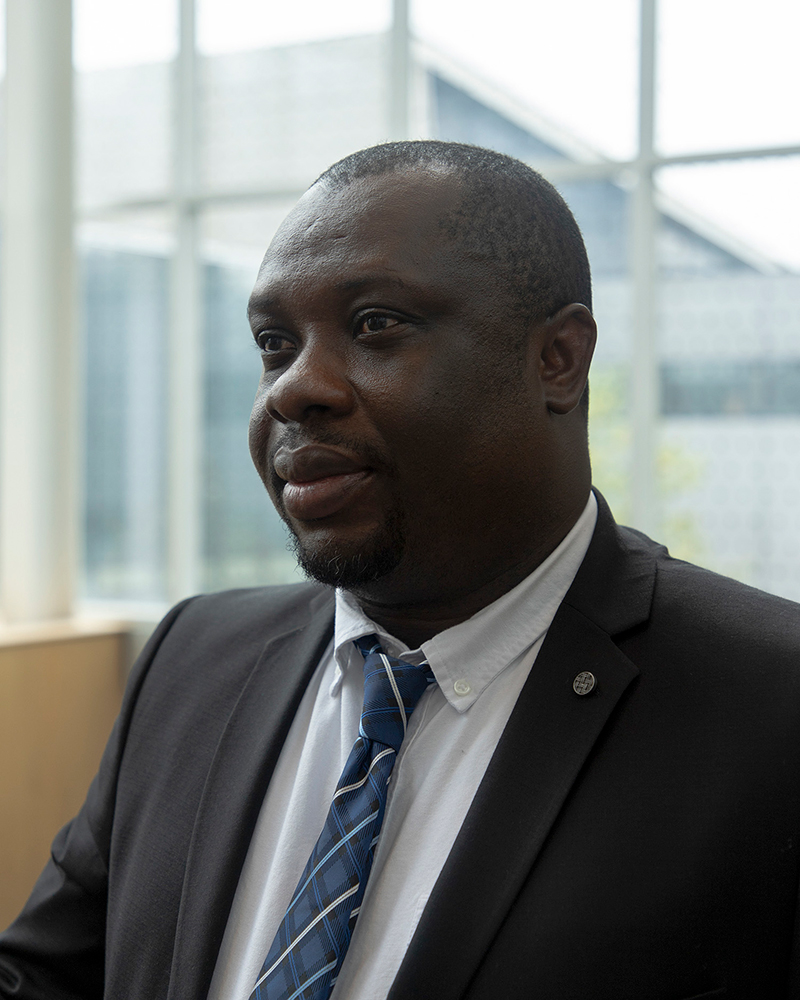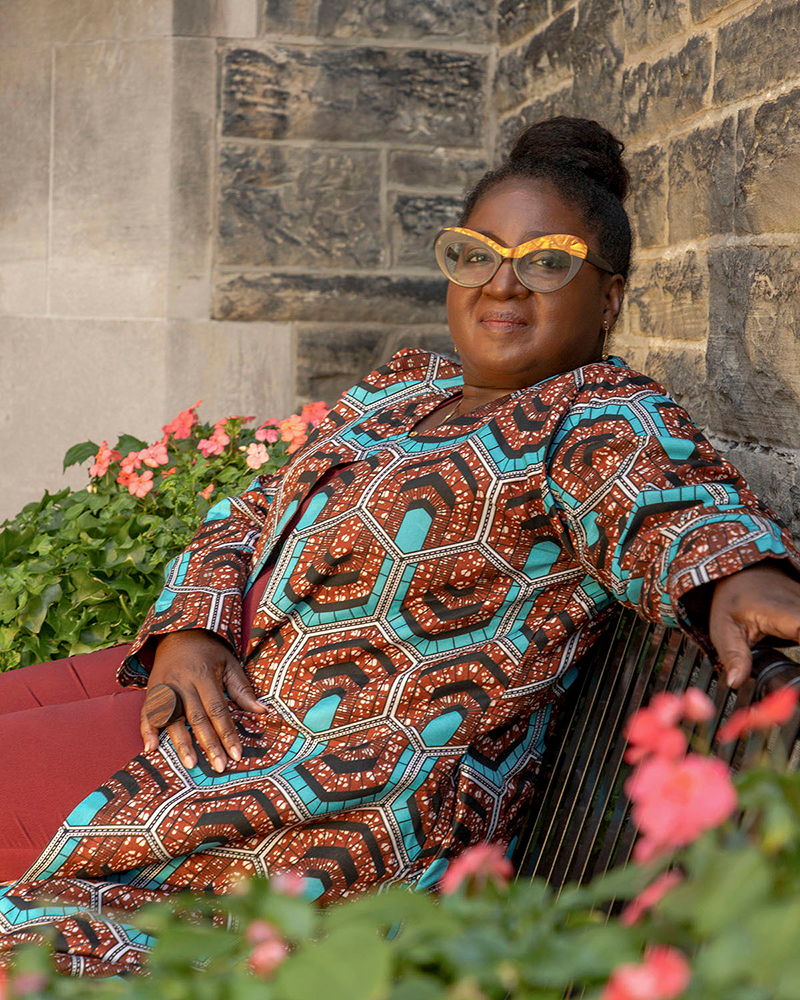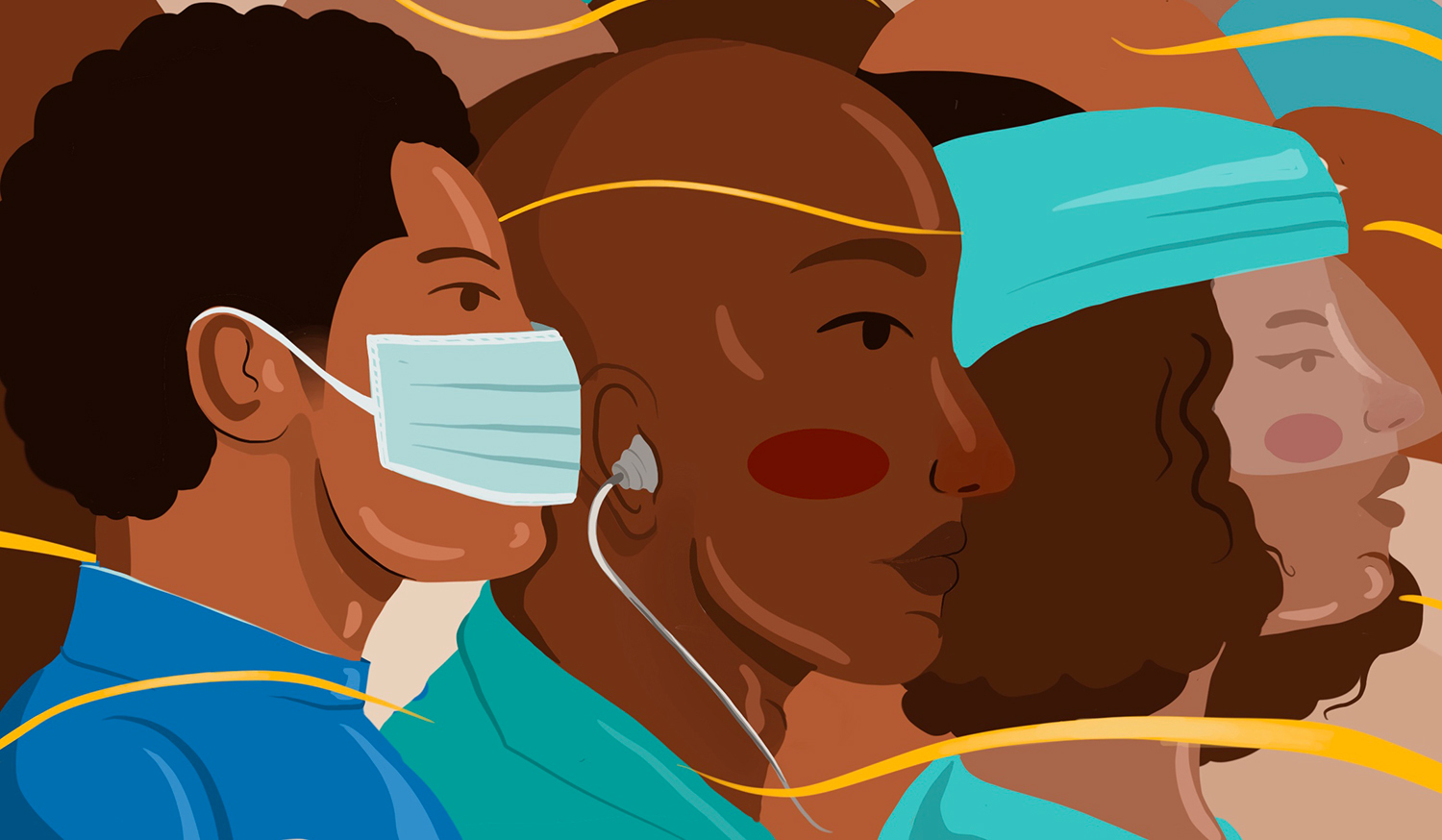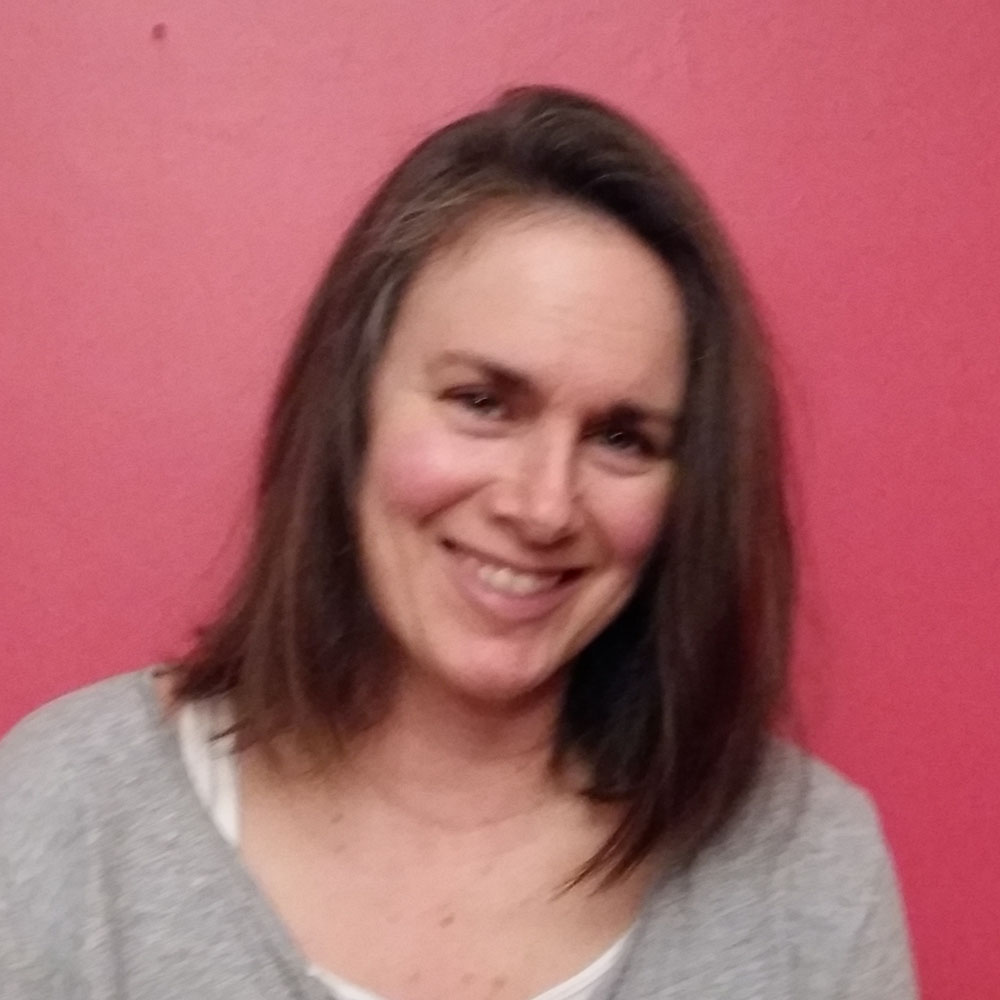Roger Antabe wanted to understand what was making straight Black men in Canada vulnerable to HIV. He knew from previous research that they were not using the drop-in centres that provided services such as testing, counselling and information about preventative medicines like PReP. But he wasn’t entirely sure why.
The question was an important one. Overall, Canada was doing well at keeping HIV at bay. The rate of new infection was quite low compared to the 1980s peak and declining in historically at-risk groups, such as men who have sex with men.
But among some populations, including straight Black men, the number of new cases was trending higher. Statistics showed that a small but significant portion of the transmission in the Black community was occurring through heterosexual contact. Despite making up less than five per cent of the Canadian population, Black people accounted for 25 per cent of the country’s new HIV cases. (Indigenous people, who likewise represent only a fraction of Canada’s population, also account for 25 per cent of new HIV infections.)
How could such small populations account for such a high proportion of infections, wondered Antabe, an assistant professor in the department of health and society at U of T Scarborough. “Fundamentally, there must be something wrong with the way we have looked at HIV, or with Canada’s approach to addressing the issues of HIV,” he says.

From a series of surveys, small focus groups and individual in-depth interviews, Antabe and his colleagues learned that many members of the Black community were unaware that HIV was even a problem in Canada, let alone that their group might be at heightened risk. Many didn’t know there were services available to help. But more worrisome, even those who did know often chose not to use these services. The number one reason? They felt they would be treated as people who make others ill rather than as patients.
Antabe’s research revealed pervasive racial stereotypes held by health-care workers, lack of representation from the Black community both in clinics and in leadership, and inequitable funding models. Public health, he says, was letting this population down.
How HIV has been treated in the Black and Indigenous communities is a useful illustration of problems seen across the board in health care for racialized people. It becomes a vicious cycle. People are stigmatized for their poor health, so they do not trust the medical establishment. (There are also historical reasons for this lack of trust.) They are reluctant to seek treatment, so their health problems get worse. The underlying issues that predisposed them to worse health in the first place – problems such as poverty, poor housing, food insecurity and racism – get worse still as their health declines.
This year, U of T Scarborough and the Temerty Faculty of Medicine, in partnership with the Lawrence S. Bloomberg Faculty of Nursing and local hospitals, announced they will launch a community-focused expansion of the university’s medical and health-care education programs that aims to break this cycle. The Scarborough Academy of Medicine and Integrated Health, scheduled to open as early as 2024, will focus on improving health care for marginalized populations.
In September, the academy received a $25 million donation from Orlando Corporation for the construction of a five-storey building at U of T Scarborough that will support its health training programs. As a hub for health sciences, the facility will help address a shortage of health-care professionals in the eastern Toronto region by increasing the number of doctors, physician assistants, nurse practitioners and rehabilitation specialists trained in the area.
The academy will put a greater emphasis on recognizing how social factors such as poverty, housing, food insecurity and systemic racism affect health, says Notisha Massaquoi, an assistant professor in the department of health and society at U of T Scarborough. It won’t see health as strictly a biomedical matter. “It’s ushering in a new way of educating health-care professionals,” she says.
At an event celebrating the gift, the premier of Ontario thanked the Orlando Corporation for the donation and reiterated its importance to the people of Scarborough. Also in attendance were Jill Dunlop, Minister of Colleges and Universities, Sylvie Jones, Minister of Health, and Vijay Thanigasalam, MPP for Scarborough Rouge-Park. The Orlando donation builds on a commitment made by the Ontario government earlier this year to fund the expansion of medical education.

Experiencing discrimination on a regular basis is associated with nearly twice the odds of having a chronic medical condition, according to research led by Arjumand Siddiqi at the Dalla Lana School of Public Health. The researchers found that “in Canada, experience of discrimination is a determinant of chronic disease and chronic disease risk factors, and Blacks and Aboriginals are far more exposed to experiences of discrimination.”
And if the HIV pandemic did not already make it abundantly clear, the COVID pandemic hammered it home: there are health inequities in Canada. In COVID’s first summer, even though Black and racialized people constituted only half of Toronto’s population, they accounted for 83 per cent of the city’s reported COVID cases. Racialized people were disproportionately represented in hospitalizations and deaths as well, says Massaquoi. “The thing is, we predicted it,” she says. “We already had so much evidence on the HIV pandemic. But our system didn’t respond. It wasn’t prepared – and it never has been.”
The vaccination strategy, she says, is a case in point. “They started rolling out the vaccination in corporate pharmacies, like Shoppers Drug Mart and Pharma Plus,” says Massaquoi. “But if you go into the neighbourhoods that had the highest percentage of Black people, they didn’t have corporate pharmacies.”
And they rolled out vaccines based primarily on age. They started with people over age 80, but that ignored the fact that more than half of Ontario’s Black population is under the age of 30, she says. “So even though they knew Black people had among the highest rates of COVID, they didn’t design rollout strategies that would accommodate that particular population,” she says. “Then you saw those rates escalate.”
Rosemarie Lall, a family doctor in Scarborough and assistant professor in U of T’s department of family and community medicine, felt frustrated by the simplistic calls to “isolate” and “stay home.” Policymakers were not considering the living situation of her patients, she says. “I had a family of six, two bedrooms, one bathroom, and the grandmother got COVID.” How were they supposed to isolate, she wondered.
A new study co-led by Tracey Galloway, an associate professor in the department of anthropology at U of T Mississauga, aims to learn more about the lived experience of racialized people during the pandemic. “We wanted to really understand the experience of the pandemic through people’s voices and stories,” she says. There was ample data from the province and the modelling table, she says. “But what we really lacked was access to people on the ground, living.”
The researchers recruited and trained eight students with diverse backgrounds and language skills to do the interviewing. Some 80 residents of Peel Region participated. The transcripts are still being analyzed, but what stood out for Galloway was how much more complex the pandemic has been for many racialized people.
Among the challenges: multigenerational homes, overcrowding, living pay cheque to pay cheque, no access to a car, no money for good masks, poor quality internet, doing everything over the phone in a second language. Even critical tasks such as managing an immigration application or navigating chemo for a family member were unfathomably difficult. “The layers of complexity in people’s lives are a story that we didn’t see,” says Galloway.

One of the things that might help is greater representation of Black, Indigenous and other marginalized peoples in health care, especially in positions of power. “Representation is important,” says Onyenyechukwu Nnorom, a family doctor, public health specialist and Black Health Theme Lead for the Temerty Faculty of Medicine. “Increasing the number of Black physicians is part of what’s required. It’s not enough, but it is part of what you need to see change.”
Though Black people make up about nine per cent of the Toronto population, that level of representation is absent among doctors and hospital administrators. There are few Black people in health-care leadership roles in the city, and there are no Black hospital CEOs.
Medical schools have been part of the problem. In 2016, only one medical student self-identified as Black in U of T’s class of 259 students. At the time, faculty and staff had been working on changes to the application process that were similar to ones the faculty had made in 2012 for Indigenous students. The new process requires students to do a bit of extra work – write an essay, for instance – but applications are reviewed by a committee that includes members of the Black community. In 2024, the Temerty Faculty of Medicine is expected to graduate more than 20 Black doctors – the largest such cohort from one university in Canada’s history.
But simply minting more Black and Indigenous health-care professionals is not enough. Racism needs to be addressed. If a university is going to recruit Black students, for instance, it has to provide a safe space for them, says Nnorom. Initiatives such as “Black at Temerty,” which encourages feedback from the community, aim to recognize and combat the biases and prejudices Black students, staff and faculty face at medical school.
Health-care workplaces need to do better as well, says Nnorom. In a survey of Black physicians and postgraduate medical trainees conducted through the Black Physicians’ Association of Ontario, more than 70 per cent of respondents reported negative experiences. According to the survey, these included being mistaken for housekeeping staff, getting unwanted comments about their hair, being asked where they come from (when they were Canadian-born), and having patients refuse treatment because “I don’t want that [N-word] taking care of my kid.” Nnorom says a few hospitals in Toronto have started to collect information from their staff on the Black experience, but more is needed.
Massaquoi is advocating for more race-based data collection regarding patients. “It’s the only way we’ll know what the unique issues are for different populations,” she says. “It’s the only way we’ll know if they’re even accessing our services. And it’s the only way we’ll know what kind of experience they have when they do access our services.”
She wants this data collected as part of a patient’s intake into any health-care service. Researchers can trace a patient’s movement through the health-care system by OHIP number – they can see who did cancer screening, who visited the emergency room and how often, who got vaccinated. A patient’s age, sex and address are all collected. “Data scientists can tell you just about everything you need to know about who’s using the health-care system, but they can’t tell what’s happening based on race,” says Massaquoi. “Now imagine if race was attached to that number.”
If you look at the Public Health Agency of Canada’s data on chronic disease, for instance, it delivers data by disease, by year, by province or territory, and by sex – but not by race. Massaquoi is a former executive director of the Women’s Health in Women’s Hands Community Health Centre. The facility, for Black and racialized women in downtown Toronto, has been collecting race-based health data for more than 25 years. It is carefully attuned to a person’s health requirements in relationship to their race, she says. “It becomes a very effective health organization, because I know exactly who is coming and what their needs are.”
Nnorom says it’s also time to contemplate a different, more inclusive approach to medicine. For one thing, doctors need to listen better, she says, and then modify their response to meet a patient’s stated need. They also need to understand cultural difference and cultural barriers – and to accept that some patients are going to need to come back a few times because there is a lot of chaos in their lives. “Poverty is racialized. People are being evicted from their houses. People are losing their jobs,” she says. “And so sometimes taking their medications, or showing up on time for an appointment, or listening to a doctor’s advice might not happen right away.”
First and foremost, health care needs to respect our shared humanity, says Nnorom. “When people get dignified care, culturally safe care and holistic care, we see that there are improvements in health outcomes. Whether that happens to be blood pressure, or diabetes, or increased cancer screening, or better COVID vaccine uptake, it takes time, and it takes deep listening, and it takes the respect of community to be able to do that. But we’ve seen time and time again that it works.”




One Response to “ A Prescription for Equality ”
The Scarborough General Hospital, a U of T teaching hospital, has been a global centre for diversity and health for 30 years, with this article highlighting that much more needs to be done. The generous gifts by the Orlando Corporation and the opening of the Scarborough Academy of Medicine and Integrated Health will add to this foundation and help reduce disparities further. The 30-year experience included groundbreaking published research on ethnicity and health, extensive community engagement, lectures, and networking and sharing across U of T, as well as nationally and globally. This research was reported as a book chapter and has been taught as complex dynamic interactions among social, biological and other determinants of health.